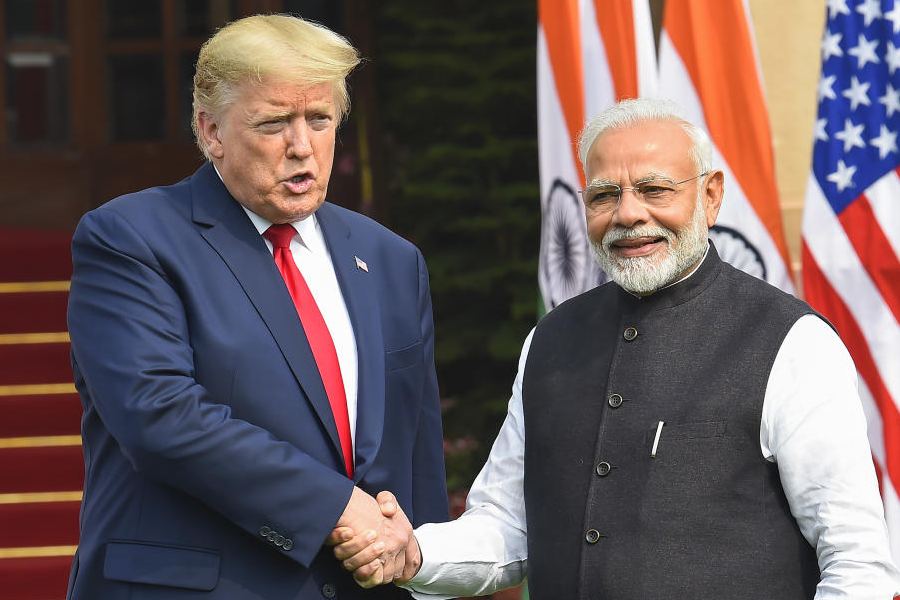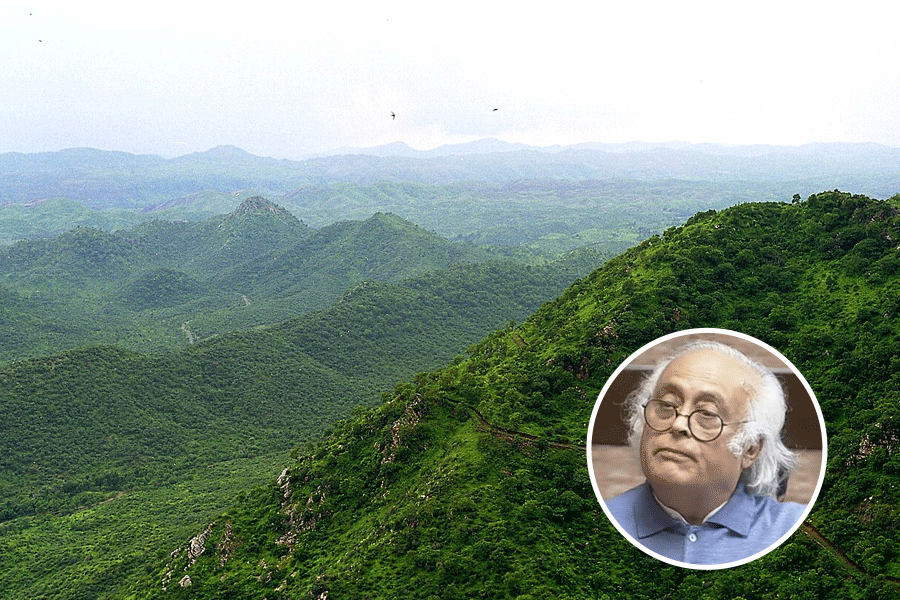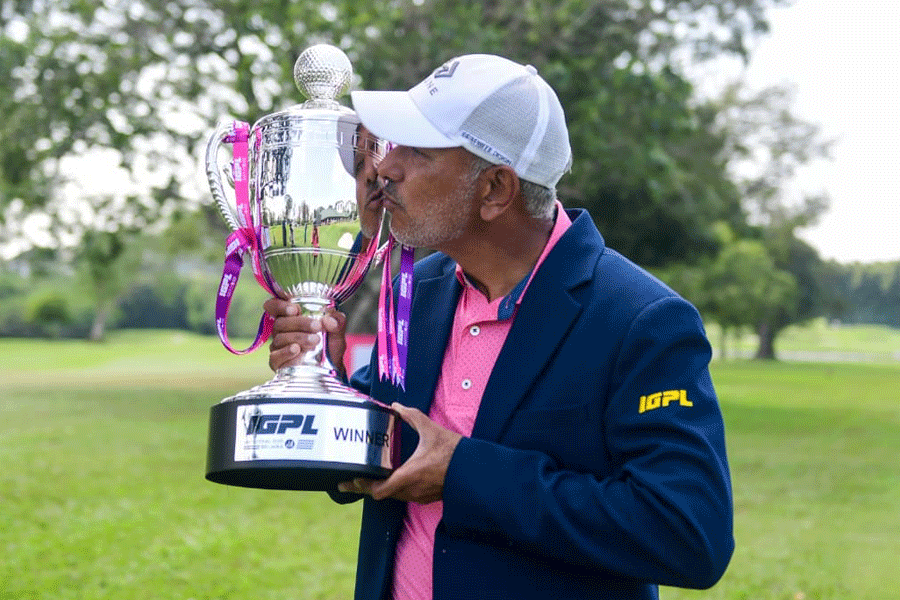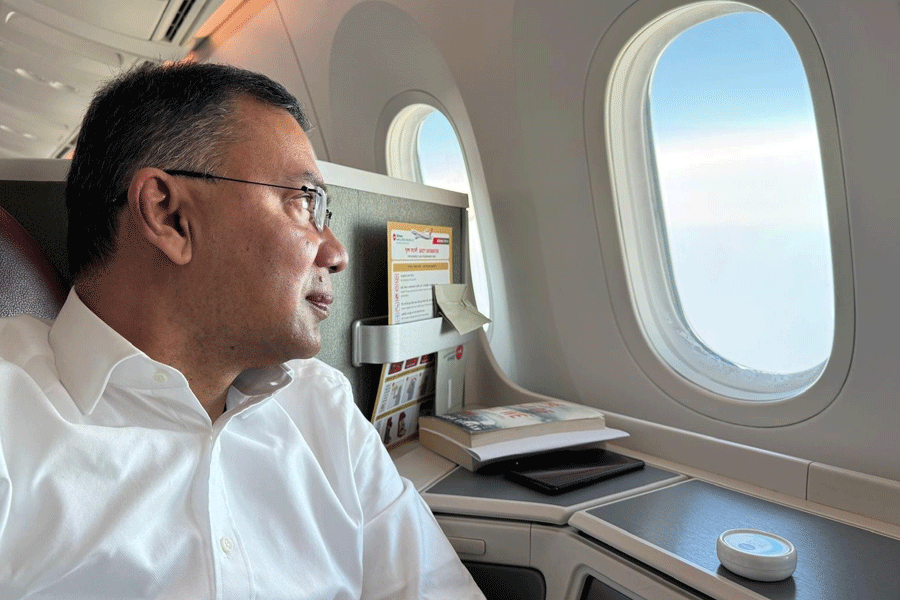 |
 |
| THE WAY WE WERE: (Top) The Hum Log cast and (above) while shooting outdoors |
The start of the 25th year of the mother of all Indian soaps is an occasion to remember a series that changed television viewing forever. On July 7, 1984, Doordarshan — then known mostly for its sleep-inducing programmes on agriculture — aired the first episode of Hum Log to a surprised and soon addicted audience.
Since then, television is no longer what it was. Satellite television has spawned 100 channels and more, and soaps — in Hindi and other languages — rule the air waves.
The Hum Log team is not what it once was either. Writer Manohar Shyam Joshi and director Vasudev Kumar have died. The kindly grandfather of the series has gone to the big sky of character actors, and the cast hasn’t tasted the kind of success it did with Hum Log.
“We were so popular, we were treated like kings by the public,” says actor Rajesh Puri about those heady days and about being mobbed by crowds at an event organised in Indore. “The public response made me feel like a super star,” adds Chaturvedi.
The series dealt with the trials and tribulations of a north Indian lower middle class family. The grandfather was genial, the grandmother earthy, the son an alcoholic, his wife long suffering, and their children had their own idiosyncrasies. Each episode ended with a little homily delivered by actor Ashok Kumar.
 |
| Sushma Seth, who played Dadi, the grandmother, went on to act in films |
 |
| Divya Seth, the middle daughter, Majhli, has acted in TV series |
 |
| Loveleen Mishra, who played Chhutki, the youngest daughter |
 |
| Vinod Nagpal, who played Basesar Ram, the father, has acted in a few films |
 |
| Rajesh Puri, the simple Lallu, signed 30 films after the show |
 |
| Abhinav Chaturvedi played Nanhe. He still gets marriage proposals |
But Hum Log was originally not perceived as a vehicle for pure entertainment. “Doordarshan as a public broadcaster had to reflect the aims and purposes of the government of the day,” says former information and broadcasting minister Vasant Sathe, who held the portfolio when Hum Log was being planned. “Hum Log in an extremely entertaining manner was a reflection of those times and ushered in messages like family planning. We had to send the social message across.”
The inspiration was an immensely popular Mexican soap produced by Miguel Sabido — whose programmes probed the issue of a population explosion while seemingly dealing with family drama. Sabido came to India in the early Eighties with David Poindexter, the head of a New York-based non-governmental organisation (NGO), Population Communications International. They met then Prime Minister Indira Gandhi, and proposed a similar idea — an entertainer that would also educate, a form that later took the name Sabido technique — for Indian television.
Gandhi was impressed. In September 1983, the duo along with S.S. Gill,then secretary of the information and broadcasting ministry, started scouting for script writers and short listed 25 candidates. One of them was the well-known Hindi writer, Joshi. The script for the first dozen or so episodes was readied, with each character sharply etched out.
And the result was an overwhelming TRP (television rating points) — though the abbreviation for channel viewership was still to come into vogue — and a veritable flood of television soap operas in the coming years.
“Forget fan mail, I had women who had trouble with their in-laws lined up outside my house and wanting me to solve their problems,” says Sushma Seth, who played Dadi, the grandmother. “If you want to get a message across, the worst thing to do is to say it out straight. You have to make it subtle. Joshiji excelled at that,” says Seth, who went on to act in a number of films, including Prem Rog and Muhafiz.
Today, Seth is associated with a Delhi non governmental organisation for slum dwellers. Her daughter, Divya — who was the rebellious middle daughter, Majhli — has acted in television series, and had the lead role in Sarrkkar on Zee TV. Seema Bhargava, who played Badki, the eldest daughter, says she was offered some challenging roles, but was typecast after the series. “I got the same kind of role that I played: the sweet, dusky girl, who will find it hard to get married,” she says. “But then only one in a million becomes a Madhuri Dixit or a Sri Devi!”
Chaturvedi tried Bollywood, but his 1988 venture Parbat Ke Us Paar sank without a trace. Vinod Nagpal, father Basesar Ram in the series, acted in a few films and is connected to the theatre.
But for Loveleen Mishra, who played the youngest daughter, Chhutki, it opened myriad avenues. “Recently, I got into dialogue writing for TV programmes. Acting wasn’t the only kick,” she says. And Puri, the simple Lallu in Hum Log, says he signed 30 films in three weeks after the show for supporting actor or comic roles.
Hum Log, clearly, changed lives. “Marriage proposals came thick and fast. I was only 20-21 then,” laughs Chaturvedi, who also had a stint as a cricket commentator. “And they come even now, after marriage and two kids!”
The series led to a book — Entertainment-Education: A Communication Strategy for Social Change (1999), by researchers Arvind Singhal and Everett Rogers, dealt with the history and impact of Hum Log in one comprehensive chapter. Chaturvedi even presented a paper on the series at an academic seminar at Johns Hopkins University in the US in 1989.
But the show didn’t take off with a bang. “The first few episodes didn’t have much impact. I thought, ‘Why did I leave Mumbai,”’ says Puri, who after more than 200 stage performances in Delhi had then just moved to Mumbai to take a crack at Bollywood.
Hum Log, produced by Shobha Doctor, took professional help to gather viewers’ response on characters, situations and episodes. On the basis of this feedback, the episodes took new turns. Plain hectoring on social issues — which marked the first few episodes — gave way to human drama.
Then episode 12 happened. Die hard fans still recall the scene where Lallu goes for a job interview. He gets up early in the morning, does push ups with funny sounds, does a puja ranting away shlokas, and mugs up answers that he has prepared for the interview. During the tête-à-tête he mumbles in broken English to his interviewer, “Sir, nice joke. You are a good joker!” Obviously, poor, lovable Lallu doesn’t make the cut. “That’s when the serial really took off,” says an animated Puri, who made his film debut with Jaane Bhi Do Yaaron and recently directed Sohni Mahiwal for Doordarshan.
For the series that ran twice — and later thrice — a week for 17 months, the stars were paid Rs 500 per episode. “And that was a lot of money for those days,” says Divya Seth, then just out of school.
“But much more fun were the rides when we all gathered from different places in Delhi to go for the shooting. We used to often do our lines inside the vehicle. It was like a picnic and we got along like a family.”
But former Doordarshan director general Bhaskar Ghose believes that while Hum Log was a landmark, setting the template for future programmes, the aftermath missed an opportunity. “Hum Log was a success because it was the only thing to watch,” Ghose emphasises.
The series also left viewers in south India cold. “We live in an illusion that Hindi is the national language,” says Ghose, recalling a trip to Chennai in the late Eighties. “The then chief ministers of both Tamil Nadu and Karnataka on different occasions quipped to me how glad they were with Doordarshan’s national programming at prime time. ‘You save us a lot of power, because our people switch off their television sets at 6.30 pm,’ they said.
“The last episode of Hum Log was on December 18, 1985. Since then there have been scores of telly series — including the greatly popular Kyunki Saas Bhi Kabhi Bahu Thi — but many rue the nose-dive that soaps have taken in recent years. “Today, the profit motive is the driving force — anything that sells wins,” says Sathe. “So sleaze, adultery, murder, supernatural creatures, saas-bahu fights become the prevailing norm. It’s an indication of the falling standards of our popular culture,” he holds.
Hum Log — like Chaturvedi’s clock — is perhaps a reminder of changing times.










